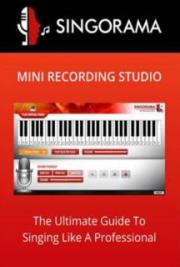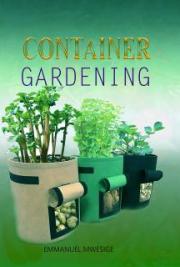Part 3: What to Do With Your Songs
Putting It All Together
If you find that your tune sounds way too much like the songs in the PRLV, then you borrowed a little too much, so next time give it a little more of a personal twist. Over time you will get better at it and find a balance.
Once you have lyrics, chords and a melody, then put together a simple page like the “Fake Sheet” below and give it to your band or song writing partner. Also write down the actual timing of your chord progressions by measure in some simple way as shown. Add the copyright notice as in the following example.
Once it’s all done, record the song in anyway possible, no matter how good or bad the recording. You’ll now have two permanent versions of your song, on paper and audio. Don’t let your tunes get lost in some old notebook where you forget the chords and how the melody went!!
“Arranging” the Songs
After you give the songs to your band, producer, or other partners, you may want to arrange them to give them a fuller sound. This is where you might come up with all the other elements of a commercial song such as:
Intro and outro
Guitar and bass riffs
Harmonies
Solos
Keyboard parts
Samples
Breaks and stops
Sequenced loops
String arrangements
Some ad-libbing in the very last chorus
…and anything else you can think of.
Arranging Golden Rule:
A hit rock song should be able to be played solo on guitar or piano with one vocal and get consistent audience compliments.
So that means if your song “only sounds good with the harmony” then it’s probably not that great. The lyrics, chord progression, melody and hook in the chorus should be so cool and also simple that it needs no help to stand on its own two legs as a song!
If you can’t sing your song with one instrument and feel great about it, then fix it or trash it!
“Picture of Clouds” Fake Sheet Example
“Picture of Clouds”
| C | E | C | E |
| G F | E | G F | E | The child’s drawing God in candle wax
Making finger paint hearts with tiny hands
Whispering about butterflies to her Mom in the morning Having breakfast with her daughter and in love with the story
Nothing is free and you can starve alone
Wed to her man and a place and a home
Willing to face things she can sleep without sinking And stay alive by thinking about her baby painting a Picture of clouds, picture of clouds
The little one plays violin like it was a memory inside The tune is haunting like a dream you can recognize Mother can hear her through the door and is proud Helping her mind escape from the debt and their town
Nothing is free and you can starve alone
Wed to her man and a place and a home
Willing to face things she can sleep without sinking And stay alive by thinking about her baby painting a Picture of clouds, picture of clouds
It can all come together with a gentle touch No need to roam when you have so much Nothing has been better since she arrived Yeah life can happen and you do more than survive
On the porch coloring canvas with spinning suns The girl is fierce like a lion not yet unleashed on the world Far from things wicked and tattooed now she plays cello Mother surprises her with lemonade and Jell-o
Nothing is free and you can starve alone
Wed to her man and a place and a home
Willing to face things she can sleep without sinking And stay alive by thinking about her baby painting a Picture of clouds, picture of clouds
The suns always shining, the stars are aligning In a picture of clouds
© 2006 Daniel O’Connor, All Rights Reserved.
Practicing and Fine Tuning: Ongoing
After 15 minutes you’ll have a basic idea of the melody. However, you’ll need to play through the song 5 or 6 times to fine tune what you’ve created before playing it for anyone. Take the time to really work out what you’ll sing for every line, but if it doesn’t come naturally after a few times of playing through the song, then it was not meant to be and you should start over with a different chord progression.
Writing this way will decrease the percentage of tunes that you scrap, and increase the quality of those that you keep. But, about 1/5 of them will still come up as garbage, and certainly some will be better than others. Just rotate them out of your set as you write better songs.
Also, even after you have played it out, don’t be afraid to make slight alterations here and there if you find that for some reason a section just isn’t working. You’ll feel it if one of the sections of a tune just doesn’t carry like the others. If you rewrite a section like the bridge or a certain verse, don’t do it from your head, use the PRLV method! To trouble shoot a problematic song, figure out what step in the 1 hour process you need to go back to…
The 7 Step Method Outline
1. Construct the “Proven Rock Lyric Vocabulary” (PRLV)
2. Imagine a story or theme
3. Write lyric lines
4. Rhyme the lines and back fill
5. Structure and fine-tune the song
6. Choose chords
7. Sing the melody
Common Song Problems & How to Fix Them
Problem: Your lyrics seem too abstract, song doesn’t make sense.
Solution: Go back and come up with a more defined story. Expand your PRLV. Write more lines that tell your story.
Problem: The song does not have a good enough hook and chorus.
Solution: Write rhyming 4 line sets using the PRLV until one jumps out at you and cool sounding and concise. If the most interesting phrase in that set could be a title, then that’s your chorus.
Problem: The melody isn’t good
Solution: The most likely problem is that the range and power of your verse and chorus are too similar. Go back and sing the verse lower and the chorus higher. Or, the lyrics are not rhymed well enough or the hook is not cool enough. If you improve those things and you still can’t sing a naturally great melody, then find a new chord progression.
Problem: The tune doesn’t come together live or with the band.
Solution: The song is just not good enough. Most likely problems are that the lyrics are weak, the hook is not strong, the melody is mediocre, or the chord progression is too complicated. Ask people and your band what they think and try to pin point the problem.
A Better Way to Write Commercial Songs
Writing the way outlined in this book, someone asks me at every show, “Was
that an original?!” That’s the ultimate compliment!
Of course, the whole process can take much longer than an hour if you want it to. Sticking to a time limit is not a requirement for writing an excellent tune. But the fact is that you can come up with much better results than you are used to - even in an hour. To me, the realization of things outlined in the book came over a 20 year period, and the 1 hour method took 2 years to fine-tune, so I hope I have saved you a lot of time and wasted effort!
Like I said, I’ve been writing the way outlined in this book for 2 years and sometimes I try to do it the way I used to…pen, pad, guitar and my own thoughts. Also, I used to write chords, melody then lyrics, which is the opposite of this method. I’m always sorry I try that because I always toss out the tunes I write the “old” way. They just don’t compare and I can tell when I play them out… the bands not as into it, people don’t watch as much, and I don’t get compliments. Here are the differences:
Typical Songwriting Method
Pen + pad + my own thoughts = ½ or more songs thrown away
Limited audience interest
Mediocre songs
Diminished confidence and motivation
1 Hour Hit Songwriting Method
Hit song list + Proven Rock Lyric Vocabulary + proven rock themes + cut up software + proven rock chord progressions list + rhyming dictionary + MS Word + my own thoughts = Only 1/5 of songs trashed
Constant positive audience reaction
Songs that feel great to play
Tunes I think could possibly be on the charts
Lots more motivation and confidence onstage and in life
Feel free to experiment endlessly with progressions, lyrics and melody!! Just do it using proven building blocks that rock fans will recognize, admire and enjoy!







